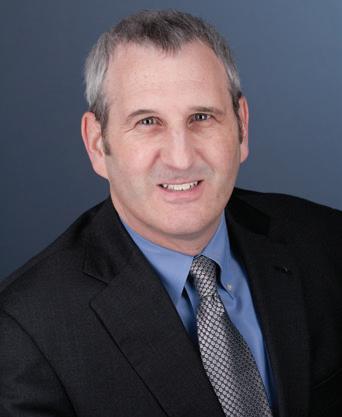STUDENT NEWS
Aerospace Engineers Claim Top Honors at International Design Competition by Joel Mathis
U
niversity of Kansas aerospace engineering students won three awards at an aerospace design competition held by the American Institute of Aeronautics and Astronautics (AIAA), extending a long run of KU excellence at AIAA events. Nathan Simon and Jacob Rogers took second and third places, respectively, in the undergraduate individual aircraft competition, while a KU team led by Jacksen Goyer took third place in the graduate team engine design event. The awards were announced in September 2019. “The effort our students put into these design competitions is extraordinary, as is the systems engineering insight they gain in such a short time frame,” said Rick Hale, chair of the Aerospace Engineering Department at KU. “It is truly validating when industry experts consistently agree that the product of our student scholarship ranks among the best in the world in these design competitions.”
A CLOSER LOOK AT THE WINNERS Students in the undergraduate aircraft design competition were challenged to build a drone aircraft capable of surveying 100 miles of power lines in a single day. Nathan Simon, a native of Chanhassen, Minnesota, who graduated in spring 2019, turned to nature for inspiration, dubbing his design “the Pteslasaur,” a lightweight craft with wings made of a flexible membrane that resembles a pterosaur, an extinct flying reptile. The craft was designed to be folded and stored in the 18 | FALL 2020
back of a standard pickup truck for easy transportation between work sites. “My approach with this was definitely a unique design,” Simon said. “The ability to use the membrane on the wing for flight was biologically proven millions of years ago,” Simon wrote in his design report. “There is also current research looking into using the membrane for the wing structure, so this concept can be used in place of the traditional airfoil wing structure used in most aircraft. Transportation of the aircraft and mission supplies will be using the Ford F-150, so the purpose of the membrane wing is to reduce the packing volume of the aircraft.” Simon is now pursuing a master’s degree at Georgia Tech. Jacob Rogers, a Lawrence native and recent graduate, also tried something unusual in his drone design: Two fuselages — one with an engine and a propeller, the other with a sensor pod to do the line surveying. “It was kind of a unique design. I felt like for that competition there were a lot of cookie-cutter-type planes, and I wanted to cut free from that,” he said. “I think that’s what made it stand out enough to get selected at least for third place.” Jacksen Goyer, meanwhile, led a six-person team of students to design a new hybrid — part electric and part gaspowered — engine for a long-endurance search-and-rescue drone capable of loitering for more than 20 hours at a time. The team designed their entry with high-temperature materials and coatings in order to let the engine run at higher-than-normal temperatures, helping drive down the weight and fuel consumption of the engine.
“One of the harder parts of the problem was weight,” said Goyer, a Kansas City, Kan., student now pursuing his master’s degree at KU. “They wanted to make it as light as possible, as small as possible and as fuel efficient as possible. It was a challenge, an impossible design task.” Not entirely impossible — the KU team took third place in the event. Other members of the team were Tim Aiken, Anthony Bendure, Blake Hartwell, Ryan Niday, Jameson Poth and Charles Richmond. The students involved in the winning teams said they learned new lessons about the craft of engineering while preparing for the competition. “It definitely showed you how much — areas where you have to make compromises is a big part of that,” Rogers said. “You can spend as much time as you have in any one part of it, but you have to know where to make the sacrifices and put your energy so you can make the best product you can.” Simon said backing from KU faculty was helpful during the process. “Having professors be interested in our projects really helped,” he said. “It gives a chance to do more learning beyond our coursework. That really set me up to apply that knowledge into a unique design.” The aerospace engineering program at KU started winning AIAA awards in 1969. Today, KU students have claimed more first, second and third place aerospace design awards than any other university in the world — and nearly three dozen such awards just since 2012.





















